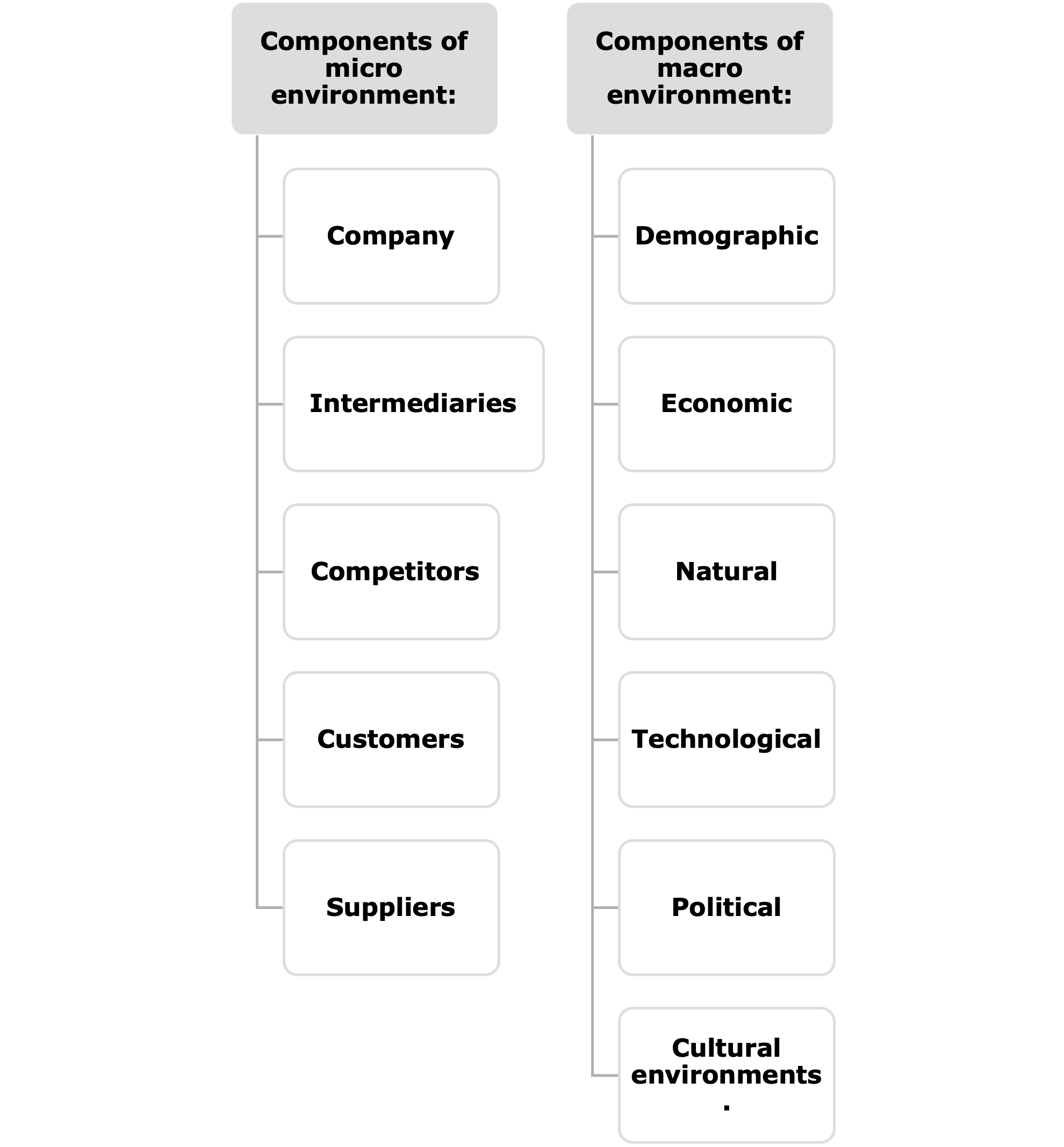Promote a positive environment that encourages people to enhance their skills and knowledge
Identify geographic, social, economic and political contexts in which particular organisations operate and how these may impact the workplace environment and culture:
The workplace environment is the setting in which employees perform the task. Employees should be trained and motivated to live a balanced life in an ideal work environment. Assisting employees in achieving a work-life balance increases their job happiness. They have time to devote to other vital elements of their lives, such as family, hobbies, and spiritual endeavours.
The setting you create for your staff is known as workplace culture. Your workplace's emotional and relational climate is influenced by the mix of your organisation's leadership, values, traditions, beliefs, interactions, behaviours, and attitudes.
Organisations do not operate in a "vacuum." It operates in an environment that is essentially separated into two major categories:
- Micro-environment: comes into direct touch with a corporation and has an immediate impact on its daily operations. It is a collection of variables or elements close to the organisation and can influence the firm's performance and day-to-day operations.
- Macroenvironmental factors: refers to the significant external and uncontrollable elements that influence an organisation's decision making. A corporation does not operate in a vacuum in its business environment; rather, it acts within a larger context.

Contexts in which particular organisations operate and their impact on workplace environment and culture:
Geographic context: are the effects that a region's natural features, people, and industries have on a workplace environment and culture. They are based on a company's general and specific location and placement.
Social context: is linked to variables that influence the society's underlying values, preferences, perceptions, and behaviour. To make workplace decisions, organisations must comprehend the cultural attitudes and practices that exist in society. Companies' failure to grasp foreign cultures can result in several cultural blunders. For example, a sign with a positive connotation in one culture may have a bad meaning in another. Social conventions and influences heavily influence consumer behaviour. Factors to be considered that impact workplace culture and environment are:
- Cultural aspects & perceptions
- Health consciousness
- Age distribution
- Career attitudes
- Population’s growth rates
Economic context: consists of elements that can influence consumer purchasing power and spending habits. For example, a corporation shouldn't begin exporting its goods to a country without first researching the residents' buying habits. Economic Factors consider the various areas of the economy and how the forecast in each area may affect your organisation. Economic components include:
- Economic growth rates
- Interest rates
- GDP
- Import duty rate
- Unemployment
- Inflation
- Spending patterns
- Disposable personal income
Political context: have a significant impact on workplace decisions. This includes laws, government agencies, and pressure groups that can influence or restrain diverse persons or organisations in a given society. When you examine political variables, you look at how government policy and actions affect the economy and other elements that can affect a firm. These are some examples:
- Tariffs
- Tax policy
- Trade restrictions
- Bureaucracy
What will I learn?
In this chapter, you will learn about the following:
- Support others to achieve work goals.
- Develop and apply strategies to recognise achievements.
- Support others to undertake relevant professional development.
Support others to achieve work goals
Work goals are strategic objectives established by management to define expected outcomes and direct employees' efforts. For selecting and meeting them, businesses must develop a strategic strategy.
Importance of work goals:
Increased alignment:
Goals bring together employees, managers, and leaders. Employees who understand the company's goals can better match their team and personal goals to meet and surpass its objectives.
Clearly defined objectives:
Goals guide employees in terms of how they use their time, which projects to finish, and how much effort they should put into their work. Goals motivate people to take action and spend less time on activities that are irrelevant to their objectives.
Considered planning
Employees are motivated to plan when they have goals. Employees are more likely to establish and execute a strategy to achieve a goal when they have one.
Motivation for high-level performance:
Goals inspire, encourage, and fuel higher levels of performance. They excite employees and motivate them to persevere. When faced with a goal, employees become resourceful, applying or seeking out current information or obtaining new knowledge needed to achieve.
Evaluation that works:
Goals aid in determining success. All future-oriented businesses strive to improve, grow, and prosper. By comparing actual to desired performance, goals give a clear roadmap and technique for evaluating organisational success.
The purpose of work goals is to provide direction to the organisation's personnel.
Types of work goals:
- Strategic goals: are determined by and for the organisation's highest management.
- Tactical goals: are decided by and for the highest management of the firm.
- Operational goals are for lower-level managers to deal with more immediate concerns.
Ways to support others to achieve work goals:
Setting and completing goals keeps employees motivated by looking forward to fresh accomplishments and rewards, allowing them to push their performance to new heights. Great employee goals are detailed, time-bound, quantifiable, and fairly attainable, and they encompass each of the four essential components.
Foster open and honest communication:
Create an environment that values honesty and transparency in all aspects of communication. Invite folks to express their perspectives and discuss the roadblocks they face. Request — and pay attention to — input. Most importantly, make sure your team members can get to your door easily if they need to.
Create collaborative goals:
Goals should be clearly stated and defined from the start. It may take a little additional time and planning to get things perfect initially, but it pays off big time. The team must buy into the goals (so plan them collectively), everyone involved must agree on what success looks like (so define clear KPIs straight away). Leaders must acknowledge and support the team for the greatest results throughout the process (check-in frequently and offer guidance where needed).
Celebrate their success:
Applaud brilliant ideas or achievement of goals. Share your team's accomplishments with the rest of the organisation and promote them to leadership positions. You can even schedule a lunch or supper to celebrate huge achievements so that everyone on the team can celebrate together. Do it together, whichever you chose to commemorate the occasion.
Allow team members to problem-solve:
Encourage team members to brainstorm and come up with their own rather than enforcing answers. You can empower your team to think creatively, create confidence, and foster a feeling of ownership by providing them space to find the correct answer and submit their ideas.
Provide adequate resources and training:
A superb leader does more than simply assist their subordinates in performing their current tasks. They assist them in identifying opportunities for advancement to improve their abilities and advance their careers. Give your team the resources they need to succeed and advance to the next level.
Keep yourself accountable:
Things will not always go as planned throughout your time as a leader. You may even make a few mistakes. When things go wrong — when a project deviates, when the scope shifts, when the unexpected occurs — you must confront the situation head-on. Assume responsibility and collaborate with your team to resolve the problems and get back on track.
Keep your eye on the big picture:
You must guarantee that your team completes daily duties without losing sight of the larger goals you're pursuing and how you're contributing.
Show some empathy:
Empathy is the most crucial skill in a leader's toolkit. “Is everything OK?” is a simple question that shows you care about the team member and helps you create relationships.
Build strong one-on-one relationships:
One-on-one meetings are an excellent technique for a team leader to form bonds with subordinates. They also allow each team member to make a case for personal improvement or bring up difficulties preventing them from doing better. Pay attention to what your teammates have to say and do everything you can to help them.
Build respect:
Great leaders show respect for their team members in various ways, including being involved with and working with them. They have no qualms about admitting mistakes or taking chances. Respect is acquired via empathy, compassion, and trust, they realise.
Develop and apply strategies to recognise achievements
An employee accomplishes an achievement using their talents, effort, and perseverance, such as achieving a goal or completing a project. When achievements are recognised, feelings of satisfaction and loyalty increase.
Recognition programs are intended to express gratitude for who the person is and what they do. It is about taking the time to engage with them and say thank you in a meaningful way.
Steps to develop a recognition strategy:
Clarify your goals: Make a list of the reasons why you wish to start a program. For example: Do you wish to excite and inspire your employees or increase your sales?
Interact with Employees: Some people find it motivating to be publicly recognised, while others prefer a private pat on the back. Sit down with employees individually to find out what they want; ask them how they want to be recognised. You can even send a survey with open questions for elaboration. SurveyMonkey and Zoomerang are two popular survey tools.
Form a committee: Appoint individuals to oversee the recognition program. Based on survey results, the committee can be tasked with developing means of recognition.
- Consider offering professional development seminars to employees who want to be acknowledged for acquiring a new skill.
- Consider introducing peer-to-peer awards, which can take the shape of simple certificates or even thank you lunches, if somebody would want to earn acknowledgment from immediate colleagues.
Once the committee has been constituted, automate methods for tracking employee milestones like anniversaries and promotions.
Develop criteria: The key to a recognition program is to have relevant criteria for recognition—it should not be arbitrary selecting or favouritism. Recognition should be accessible for everyone in the firm, not just front office staff.
Involve managers: While any kind comments are appreciated, workplace acknowledgment is most meaningful from a direct boss. Do not delegate recognition notes or rewards to human resources. Individuals want to be recognised by the people with whom they work. Ensure that supervisors are involved in the recognition and reward process.
Practice: Take note of how you feel when you give praise. Make sure the appreciation is based on a relationship; there should be genuine feelings involved.
Strategies to recognise achievements:
Make it personal:
It's vital to be precise, personable, and correct. Use encouraging language and show the employee that you are aware of their accomplishments.
Provide opportunities:
Because of the nature of their occupations or lower expectations for particular sorts of labour, some employees do not have the opportunity to flourish. Employees who perform well in their positions should have the opportunity to progress their careers through increased responsibility and training.
Magnify recognition:
While verbal recognition is the most successful method of recognising employees, the best plan is to publicise employee achievements in various places, such as business newsletters, dashboards, and team meetings.
Offer beyond-the-call-of-duty perks:
Employees that continuously perform at a high level may be granted special benefits. These could include items like a better parking spot or paid vacation time.
Motivate with financial incentives:
Although monetary incentives aren't always the most effective motivators, they can surely show appreciation for well-done labour. Because they drive people to try their most at all times, the finest financial incentives are more open-ended and unpredictable.
Give holiday rewards and bonuses:
The best practices for awarding holiday bonuses are offering a standard bonus or gift package and rewarding workers for exceptional achievement with special awards, extra cash incentives, Christmas gifts, or acknowledgment for yearlong performance.
Facilitate peer-to-peer recognition:
Because employees prefer acknowledgment from their peers over recognition from their bosses, many organisations deploy peer-to-peer recognition systems to engage millennials and the new generation of flexible workers.
Recognise people’s passions:
Workers enjoy being recognised for their extracurricular interests, hobbies, and passions because it makes them feel less like cogs in the company machine. Passions can also serve as rewards in and of themselves.
Embrace gamification:
Gamification tactics can reward and motivate your employees to achieve greater performance goals in various ways. A revolving trophy or plaque can inspire excitement that far outweighs the cost. Of course, the more stunning the award, the more likely friendly competition will ensue.
Make use of technology and social media to publicise achievements:
In today's world of immediate communications, people don't live in a vacuum. Therefore it's critical to share major successes and even human-interest stories on the company's social media platforms.
Positive motivation and employee appreciation are effective methods for getting the most out of each employee. The suggestions above are solid beginning ideas, but you can tailor different rewards and recognition programmes to your company's specific needs based on your business and industry.
Support others to undertake relevant professional development
Professional development refers to the practice of tracking and documenting the abilities, information, and experience that you gain both formally and informally while you work. It's a record of what you've done, what you've learned, and what you've put into practice.
Professional development options:
Offer online courses:
- Professionals can enrol in training such as effective delegation and self-management over the internet.
- Employees may participate in webinars from their desks.
- Hosting internal workshops led by high-level managers who share insight and practical ideas is a good in-person option.
You can assist your managers in gaining confidence and impacting people across your organisation by delivering training like this.
Professional certificates: include coursework, but they often demand extra study and the passing of standardised exams. Certifications are suitable for employees who are transitioning into new roles or taking on new responsibilities. Professional certifications are most popular in the following industries:
- Human resources
- Healthcare
- Social services
- Legal
- Accounting and finance
Technical skills training: People in a wide range of professions want to improve their skills in areas including programming languages, search engine optimisation, and 3D modelling. They include employees who work in:
- Art and design
- Architecture and engineering
- Information technology
- Maintenance and repair
- Science and biotech
- Media and publishing
Certification requirements, workshops, and individual sessions contain technical training. As industries adopt new technology, IT certifications can help your employees stay on top. Providing technical training instead of outsourcing duties can help keep talent in-house.
Training in teamwork and interpersonal skills: Emotional intelligence, communication, and teamwork are examples of the types of qualities that keep your departments running well. With the correct training, these competencies can be developed.
Ways to support others to undertake relevant professional development:
Professional development is about creating a culture that appreciates learning and encourages workers to achieve their best work.
Your employees can work individually and collaboratively to achieve a common goal as team members. Each employee's professional development contributes to the company's overall success. Recognising an employee's abilities and accomplishments in their job tasks boosts their confidence, increasing employee retention and morale.
Consult employees on their professional development needs: It is critical for business owners and managers to address employee skill gaps. Your team managers or HR representatives should regularly meet with each of your employees to discuss their job performance and areas where professional growth might benefit them and the organisation. The discussion should include suggestions for improvement, demonstrating that the organisation is concerned about the employee's future.
Form alliances with other businesses and industry speakers: Companies should explore developing partnerships or providing access to workplace education, such as online lectures and in-house training sessions. You might also look into online industry resources or reach out to professionals in your sector.
Take advantage of technology: Employees must stay updated with societal and technical changes. Because rapid technological advancements impact most businesses, people with varied skills and talents provide more flexibility and value to companies than those who have stagnated in their learning. With the advent of technology and online learning, fostering a learning culture in the workplace is easier and more affordable.
Create an internal mentorship program: To help employees connect, employers should organise brainstorming groups or mentorship programs.
Start a lunch-and-learn program: Invite an experienced speaker or a skilled team member to train your staff in an informal lunch environment. Employees can engage in a creative discussion with the expert after the expert gives a presentation to the team, obtaining first-hand expertise on a certain issue.
Encourage active participation: As an employer, you should encourage employees to pursue educational opportunities inside and outside the office. You may also set up campaigns to encourage people to come up with fresh ideas.
Insert activity here.



